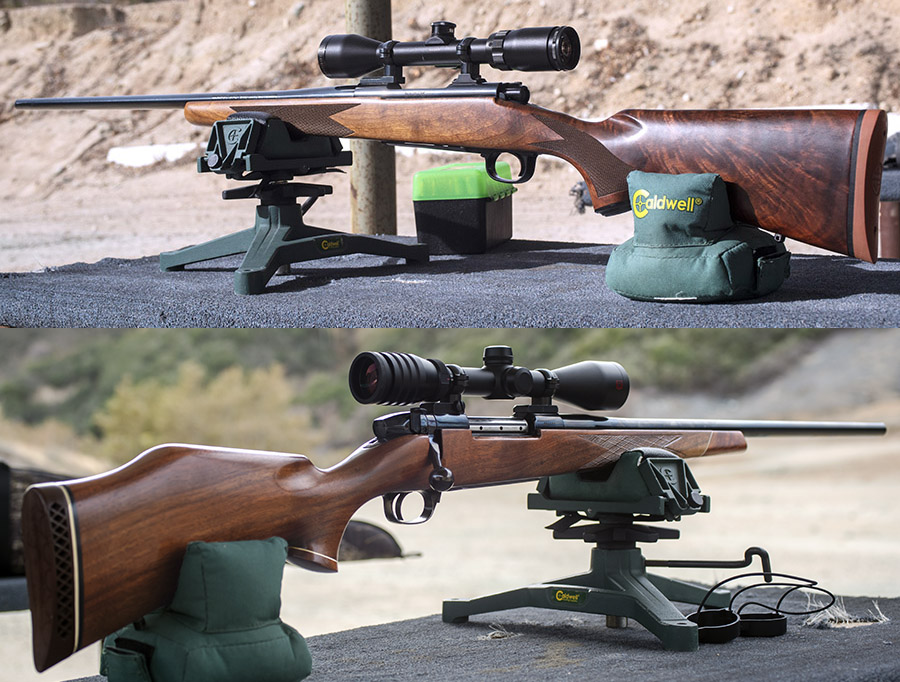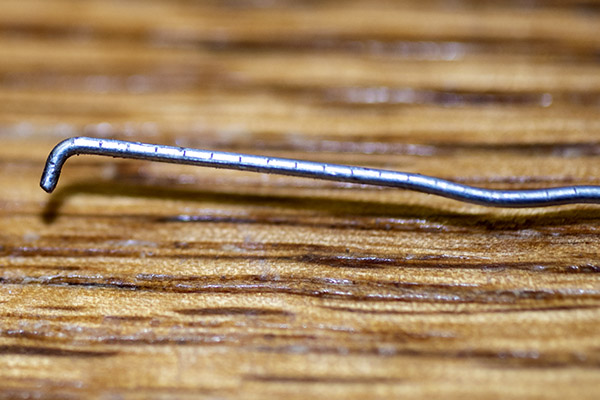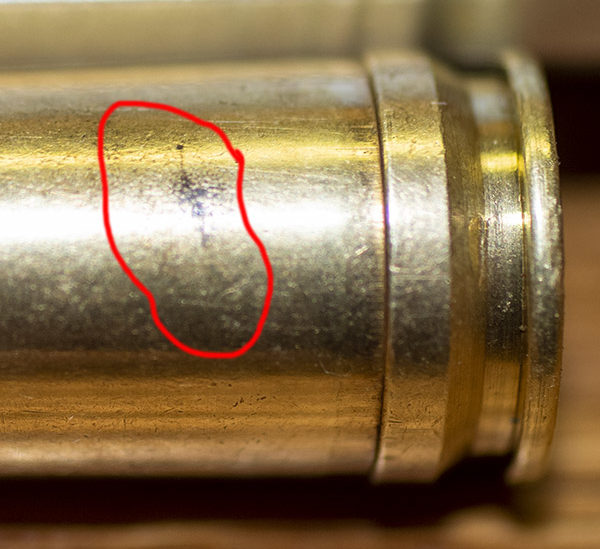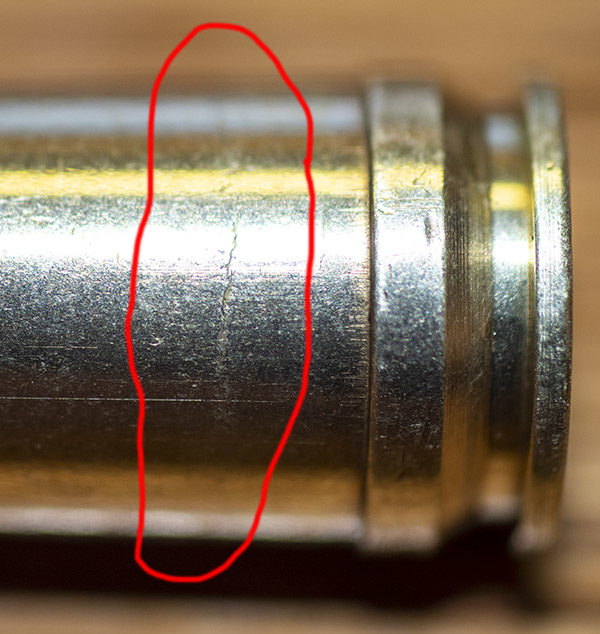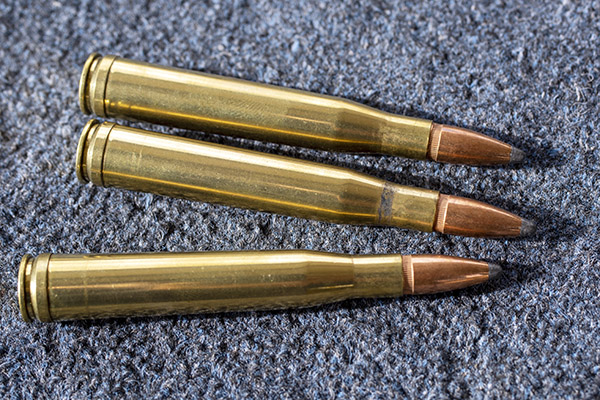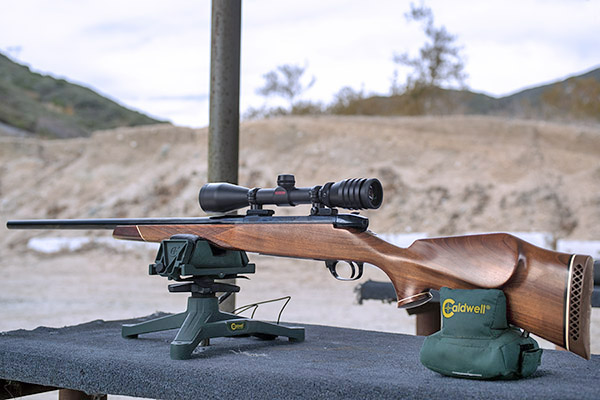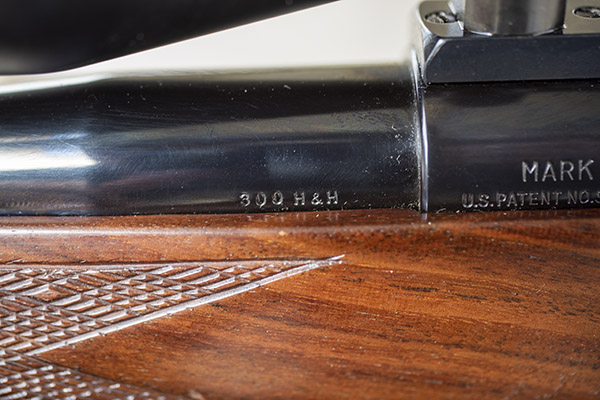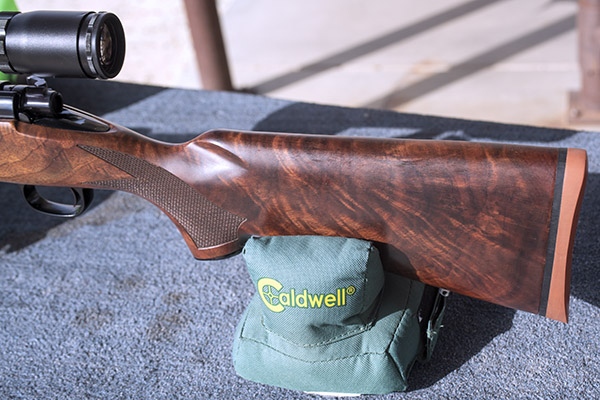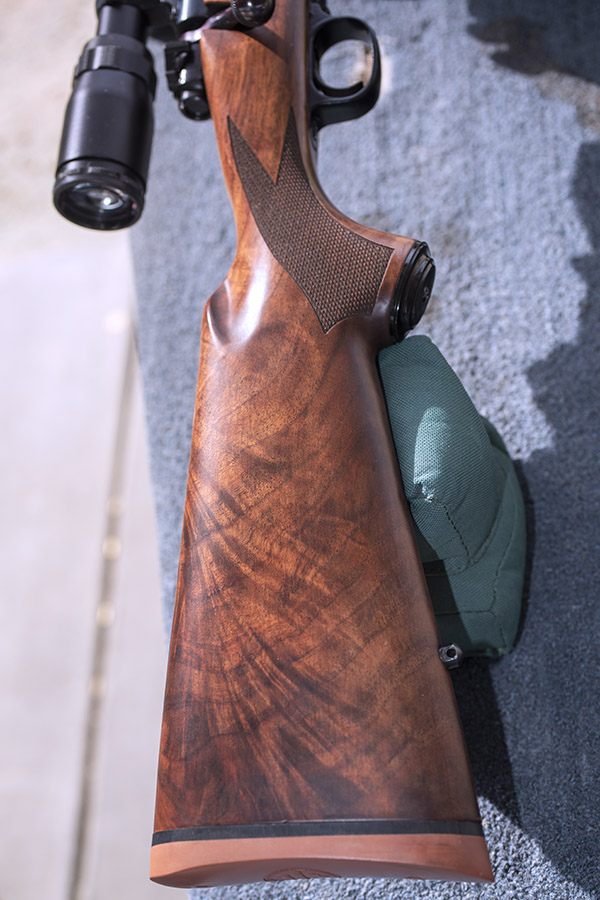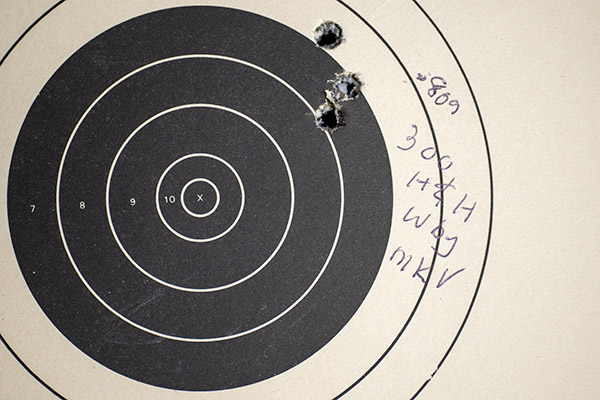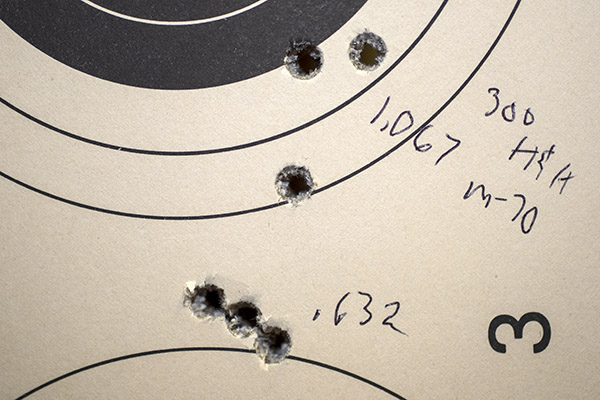Finding reloading components of any kind these days (brass, bullets, powders, or primers) is a tough thing to do. Finding brass for more exotic cartridges is near impossible. One of my favorite cartridges is the famed .300 Holland and Holland. It’s a specialty item. I’ve not seen loaded .300 H&H ammo or brass in gun stores for years. I searched for two years for brass and found nothing. Prices for both ammo and brass have climbed through the roof (Nosler brass, just the empty brass, is now about $6 per round), but it’s all moot. It could be free or it could be $100 per round. Nobody has any. I know moot, and this is it.
I was recently in my local reloading shop (Phillips Wholesale, in Covina, California). I stop by there periodically just to see what Rick has in stock, and if it’s anything I might be able to use, I buy it because there’s no telling when it will be available again. While there, I was lamenting with Rick about the sad state of affairs in component availability, and I mentioned not being able to find .300 H&H brass. Rick perked up. “.300 H&H?” he said. “I might have something.”
Rick pulled a plastic box of 50 cartridges from under the counter. It contained .300 H&H handloaded ammo in virgin (previously unfired) brass.
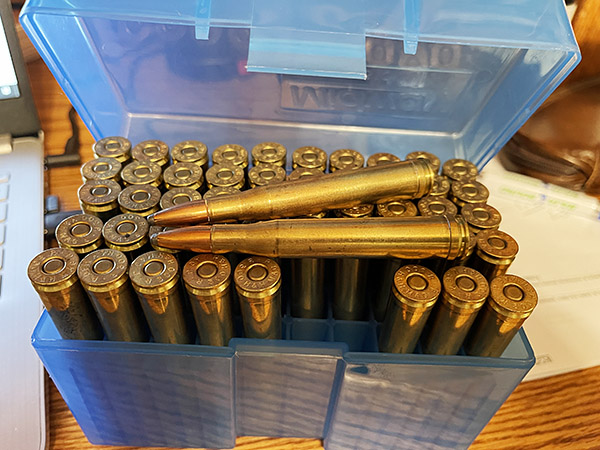
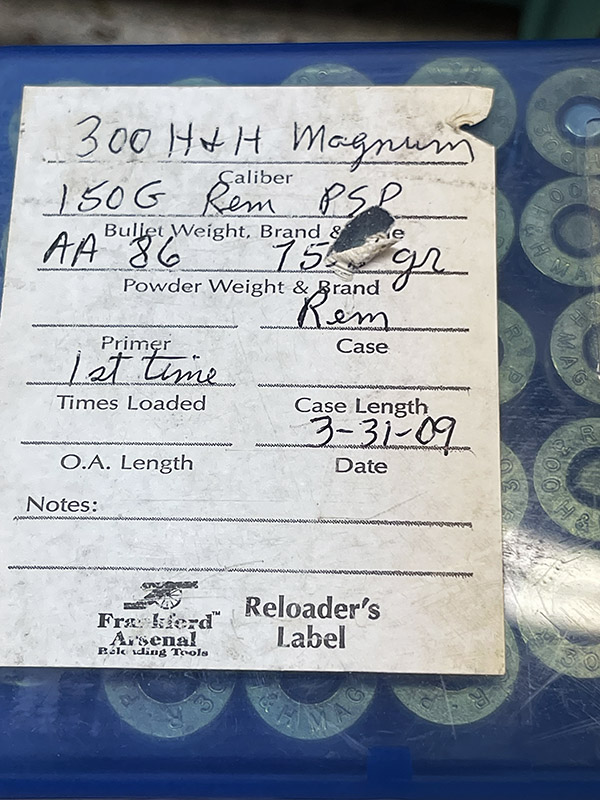
Rick helps folks settle estates when the estate includes reloading goodies. This was a box of ammo with that provenance. I normally wouldn’t fire someone else’s handloads. I’m a careful reloader; I don’t know that the someone else who loaded other ammo was. But I had, in my hot little hands, 50 rounds of fresh .300 H&H brass. I didn’t recognize the propellant (AA 86?), but I didn’t care. I figured I could pull the bullets, dump the powder, and load the new brass with my preferred .300 H&H load, which is 60.0 grains of IMR 4320 and a Winchester 150-grain jacketed softpoint bullet. My rifle (I’ll tell you more about it in a minute) has shot 0.25-inch groups with this load.
So I bought the ammo and proceeded to pull it apart. I removed the bullets (which mashed a few tips and scraped a few ogives), dumped the powder, and reloaded the brass cases with my IMR 4320 load. I reused the pulled bullets. The bullets weren’t perfect after the extraction operation, but I wanted to fireform the brass to my rifle and I didn’t care about their condition. Once the brass has been fireformed (fired so it conforms to that particular rifle), I will neck size only to maximize case life. The .300 H&H cartridge is known for short case life when it is full length resized.
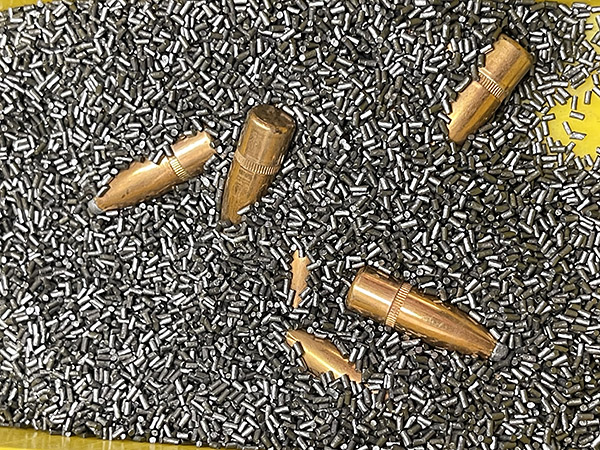
I weighed a few of the powder charges as I was pulling the bullets and they were exactly as labeled on the box Rick sold to me: 75.0 grains. Whoever loaded this (a fellow from Riverside who passed away) was obviously a careful reloader. The propellant was a stick powder, so I figured it was a rifle propellant, but I had never heard of AA 86. I recognized AA as most likely belonging to Accurate Arms, but there’s nothing I could initially find on the Accurate website called AA 86.
I called Accurate Arms’ customer service to see if they could shed any light on the AA 86 mystery. The kid I spoke with told me Accurate Arms had gone through an acquisition, and he didn’t know anything about their propellants before the acquisition. He specificially had never heard of AA 86. I poked around a bit more on the Internet and learned that Accurate Arms had occasionally sold surplus powders identified as Data Powder (or DP) powders, followed by a two-digit number. There was a DP 86 powder. I went back to the Accurate Arms site and found a reference to it, which said that DP 86 was essentially the same as their AS 3100 powder. The Accurate Arms customer service guy didn’t know this (he sounded like a young guy).
When I bought the box of .300 H&H ammo from Rick, he told me he might have some more. I gave him my phone number and Rick called a couple of days later. He found three more boxes. I was in the middle of doing something important (writing an ExNotes blog, actually), but Rick’s message took priority. I stopped writing and left for Rick’s shop immediately.
I told Rick about the phone call to Accurate Arms. Rick knew all about DP 86, and he told me that this ammo had indeed been loaded with DP 86. He also had canisters of the powder from the gentleman who passed away. It sold quickly, Rick told me.
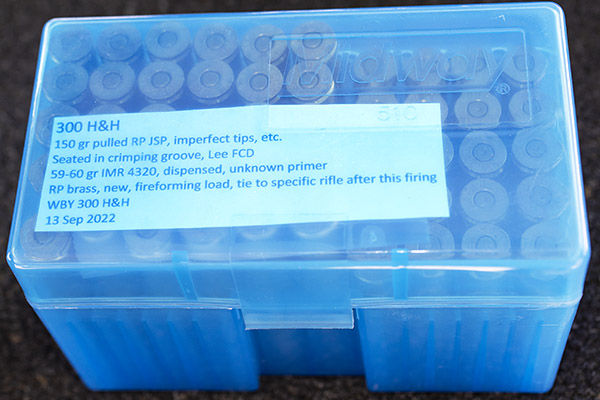
I mentioned above that I would tell you a bit about my .300 H&H rifle. My Dad bought it for me in the early 1970s before my US Army tour in Korea. The rifle began life as a 7mm Weatherby Magnum, but I never could get the rifle to group well with that cartridge. I had it rebarreled in .300 H&H, a cartridge I had read a lot about and learned to love in a pre-’64 Model 70 Winchester (don’t ask, it’s sold, and yeah, selling it was a dumb move on my part). I glass bedded the Weatherby action, and I stripped the rifle’s original epoxy finish and refinished it with TruOil.
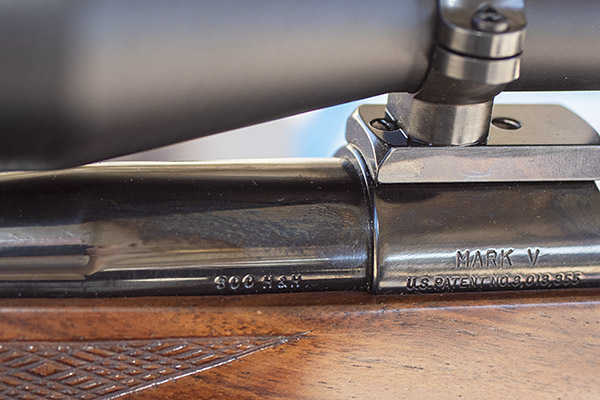
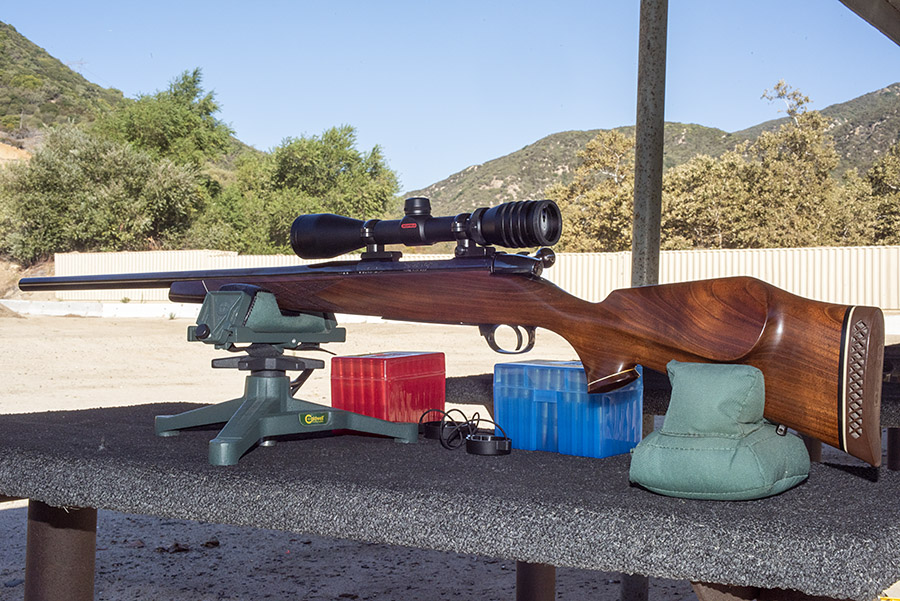
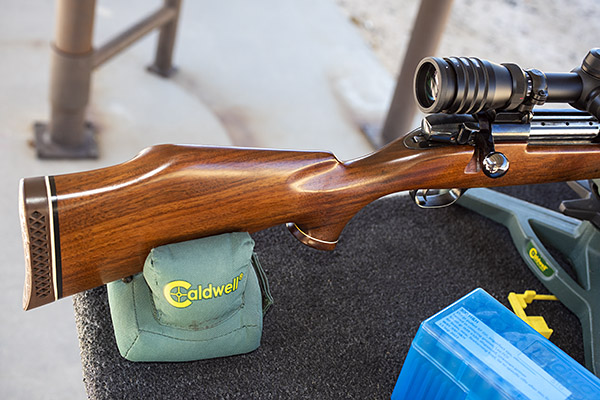
I’ve been shooting and hunting with this custom .300 H&H Weatherby for close to 50 years now, and I’ve owned and shot quite a few other rifles during that time. This one remains my favorite. I am a big Weatherby fan and I love the .300 H&H cartridge. It is the perfect combination of power, accuracy, and manageable recoil. I greatly prefer the .300 H&H Magnum over the .300 Weatherby Magnum. The .300 Weatherby Magnum’s recoil is vicious and unpleasant. The .300 Weatherby’s recoil is aggravated by a need to load at or near maximum for accuracy. The .300 H&H is a more useable and enjoyable chambering.
I bought four boxes (200 rounds!) of this handloaded virgin brass, and I recently took two boxes to the range. One contained my reconstituted ammo with the IMR 4320 powder and 150-grain pulled Remington bullets; the other was loaded with 180-grain Nosler blemished bullets and AA 85 powder. On this blemished bullet business: Sometimes bullet manufacturers sell factory seconds at reduced prices. This was the only time I’ve heard of blems from Nosler. I’m a guy who loads for accuracy (I could care less about muzzle velocity or killing power), so the idea of using a rejected factory bullet seems silly. I’m firing this ammo only to fireform the cases, so I was okay with reusing the pulled bullets. And I felt more comfortable about firing the ammo as provided by Rick once I learned more about AA 86 and AA 85 propellants.
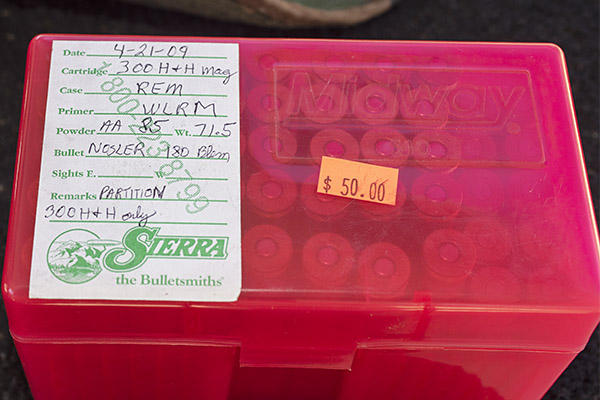
How did it shoot? Both the boxes I tried (my IMR 4320 load and the 180-grain Nosler load) shot very well. The 180-grain load predictably had a bit more recoil, but it wasn’t bad. The 150-grain bullet and IMR 4320 load showed no primer flattening; the 180-grain Nosler load showed just a hint of primer flattening (but not enough to be of concern).
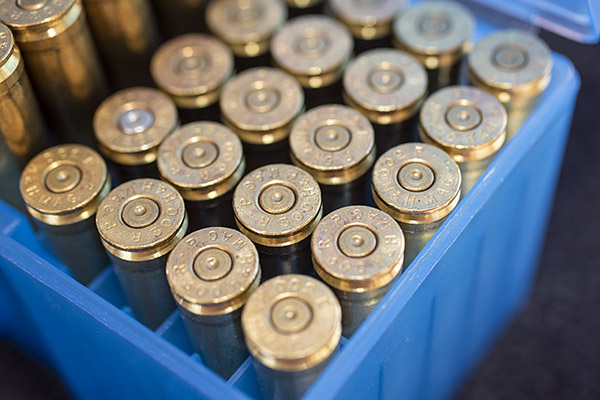

Accuracy was surprisingly good with both loads, especially considering that I dinged up the 150-grain Winchester bullets during the removal operation and the 180-grain Noslers were factory blems.
Here’s the target I shot at 100 yards with my IMR 4320 loads:
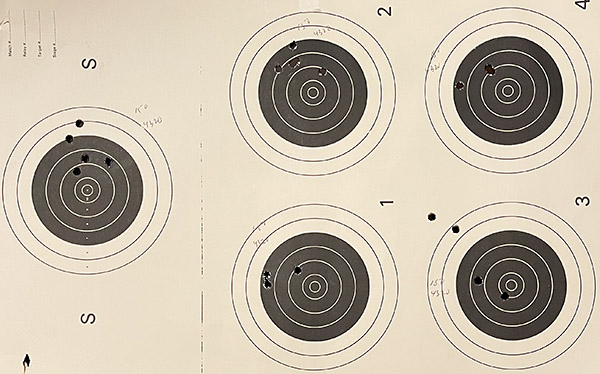
And here’s one I shot with the 180-grain Noslers as loaded by the original reloader 12 1/2 years ago. You can ignore the group(s) circled in black. When good buddy Chuck gave me a target board at the range, it had a target stapled on it with usable real estate. I’m cheap so I reused the target (somebody had previously fired at the bullseyes circled in black; I only shot at the orange and blue targets).
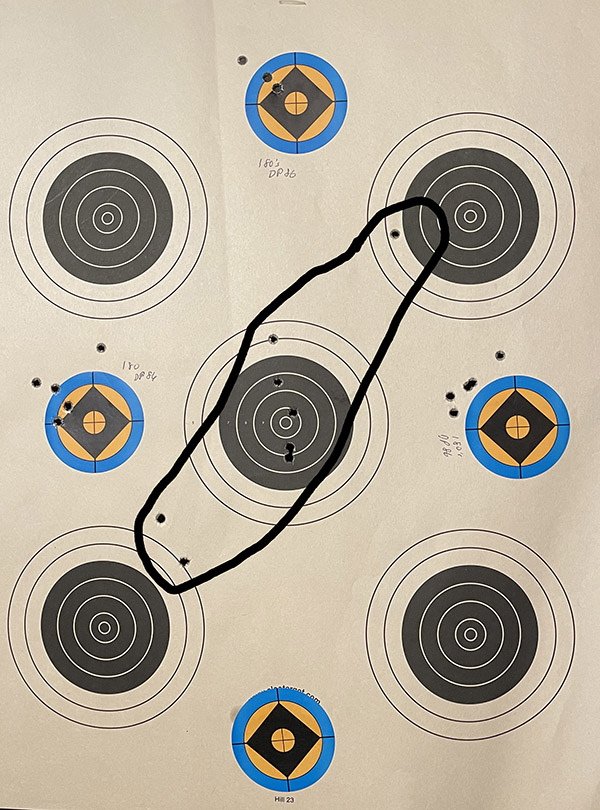
I’m quite pleased with this .300 H&H ammo. I picked up 200 rounds at about one-sixth what factory ammo would have cost at a time when neither ammo nor brass is available. It pays to maintain a relationship with local businesses.
More Tales of the Gun!
Never miss an ExNotes blog:
Keep us in components…please click on those popup ads!
When Rick doesn’t have the reloading gear I need, I turn to Amazon.


